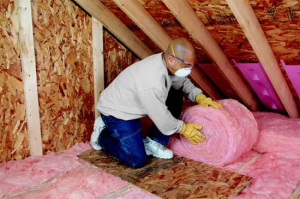Charleston Upright Piano Moving is a difficult task that requires the help of multiple people. It’s important to hire experienced movers who have the skills, tools, and knowledge to safely move the instrument.

It’s also necessary to prepare the piano for the move, such as removing the legs and pedals. This will reduce the risk of damage during transport.
Pianos are not easy to move, and it’s important to be prepared for this task. It’s also a good idea to hire professional movers to handle the move for you, as they have the experience and equipment needed to safely transport your instrument. Damage to your piano during the move can be costly, and injuries to the movers can be dangerous.
Successful upright piano moving requires careful planning and preparation, as well as the use of specific techniques. The first step is to remove anything that might get in the way of the piano’s path from its current location to its new home. It’s important to have a clear passage through the entire area, including doorways, staircases, and hallways. It’s also helpful to have an extra set of hands to help lift and maneuver the piano when necessary.
Next, it’s important to prepare the piano for the move by covering it in protective blankets and securing any loose parts. The keyboard lid should be locked and secured, and the legs and casters should be removed. It’s also a good idea for the movers to place padding along all sharp edges and corners of the piano to prevent scratches and dents during transportation.
Once the piano is covered and ready for transport, the movers will carefully roll or slide the piano onto the dolly or piano skid board. They may also utilize lifting straps to evenly distribute the weight and ensure a secure grip on the instrument. They will then navigate the piano through the planned route, taking care to avoid sudden movements or bumps that could damage the instrument.
If an obstacle is encountered, the movers should be prepared to use additional equipment like ramps and stair climbers as needed. This will help to minimize the risk of injury to movers and protect the integrity of the piano. Finally, the movers will secure the piano inside the vehicle using furniture-grade straps.
With proper planning and the right tools and equipment, you can confidently move an upright piano upstairs without risking your piano or the health and safety of the movers. The crescendo of a successful piano move is when your beloved instrument arrives at its new home and begins to fill it with music once again.
Hire the Right Movers
If you’re considering taking on the challenge of lugging an upright piano up several flights of stairs, you should reconsider and hire professional movers. While a few friends might be able to lift the instrument, navigating it up and down steps requires a team of experienced professionals with proper equipment, such as ramps and a truck capable of hauling the heavyweight.
It’s also important to recruit as many movers as possible to help with the move. Multiple movers make the job faster, safer, and more efficient. In addition to reducing the risk of injury, it will help ensure that all steps are taken slowly and carefully to prevent damage to the piano or your home’s flooring.
When moving up a flight of stairs, assign one mover to maneuver the dolly at the front (lower end) and another to lift it from the back. This provides the necessary force to get the piano up the stairs, while ensuring that the dolly wheels remain in contact with the staircase for stability. It is recommended to use padding on the stairs, especially if they are carpeted.
Once at the top of the stairs, a ramp should be placed under the piano to provide a safe transition onto the moving truck. The ramp should be covered in blankets to protect the piano from damage during transit, and it is important to keep communication open between all movers to avoid tripping or falling over the instrument.
As the piano is being loaded into the truck, it’s a good idea to have one person stand behind the instrument to guide it in place and prevent it from rolling during transportation. If the piano is particularly large, it may be a good idea to cover the entire surface with blankets to protect it from scratches and damage.
Once the piano is safely in the truck, it should be one of the first things loaded to avoid complications during transport. It’s a good idea to have the movers measure all pathways, doorways, and staircases that the piano will need to navigate prior to the move. This will ensure that there is enough space to accommodate the piano and that any obstacles can be dealt with ahead of time to prevent any surprises during the move.
Prepare the Piano for the Move
When moving a piano, it’s important to keep safety at the forefront. Using proper lifting techniques and ensuring all team members can clearly communicate with each other is essential to the success of the move. In addition, a good understanding of how to navigate stairs, tight corners and other obstacles is necessary to minimize the risk of injury or damage.
Ensure the Right Tools are Available
Whether you’re planning a DIY move or hiring professionals, the right equipment is key to a successful relocation. For example, a furniture dolly is a must to help you roll the piano across smooth surfaces and reduce stress on the instrument. Additionally, a ramp is vital to facilitate loading into the vehicle. Additional tools to consider include:
Moving Blankets and Padding
To protect the piano’s surface and delicate parts, moving blankets and padding are essential. The movers can wrap the entire piano in these materials, including the lid, and secure them with straps. Similarly, padded gloves will protect the movers’ hands and provide a better grip during lifting and transport.
Before beginning the move, it’s essential to measure the size of the piano and any spaces it will need to pass through. This can include doorways, hallways and staircases, which will help you plan the best route for the piano. Moreover, you should clear any impediments in the pathway to avoid running into them during transport. This includes furniture, household items and other debris that could get in the way or cause the piano to slip.
Before positioning the piano on a dolly, it’s important to carefully consider the position of the legs and pedal lyre. If possible, it’s recommended to remove the legs and pedal lyre prior to moving the piano. This will not only reduce the overall weight of the piano, but it will also make it easier to maneuver and lessen the risk of damage. Once the piano is properly positioned on a dolly, it should be secured in place with straps. Once the piano is loaded into the vehicle, a ramp is vital to prevent the piano from shifting during transit.
Be Prepared for Unexpected Obstacles
The sheer size and weight of a piano make it difficult to maneuver around obstacles, such as tight doorways or stairs. It can also be dangerous for anyone who attempts to move one on their own, posing significant health risks. It’s best to leave this delicate task in the hands of professional movers who have extensive experience handling such challenges.
Before the movers arrive, they’ll take measurements of the piano and its surroundings to determine the best way to navigate the space and get the instrument safely to its new home. They’ll also clear the pathway of any furniture or other items that might interfere with the process. This will also ensure that they can safely transport the piano without damaging its exterior or interior.
Once the movers have set up their equipment and are ready to begin moving, they’ll carefully wrap the piano in padded blankets to protect it during transportation. They’ll then secure it to a specialized dolly, which they can use to roll the piano into place in its new home or load it onto a truck for delivery. Once they’re finished, the movers will secure any remaining personal belongings inside a crate and secure them with straps and tape.
As you move the piano, it’s important to remember that you need to distribute the weight evenly among your team members. If you try to lift it alone, you’ll put unnecessary strain on your back and increase the risk of injuries. You should also avoid twisting during the lifting process. This can cause serious injury, so it’s best to lift the piano in a straight, controlled manner with your back against the wall and the rest of your body supported by your knees. You should also be sure to lift in unison with the other members of your team to reduce the chances of a misstep that could lead to an accident. Also, it’s always a good idea to wear gloves during this step. If you don’t, you might scratch or damage the keyboard. The piano wheels are also a common source of scuffing and scrapes during a move, so it’s crucial to invest in high-quality dollies with soft rubber wheels.








